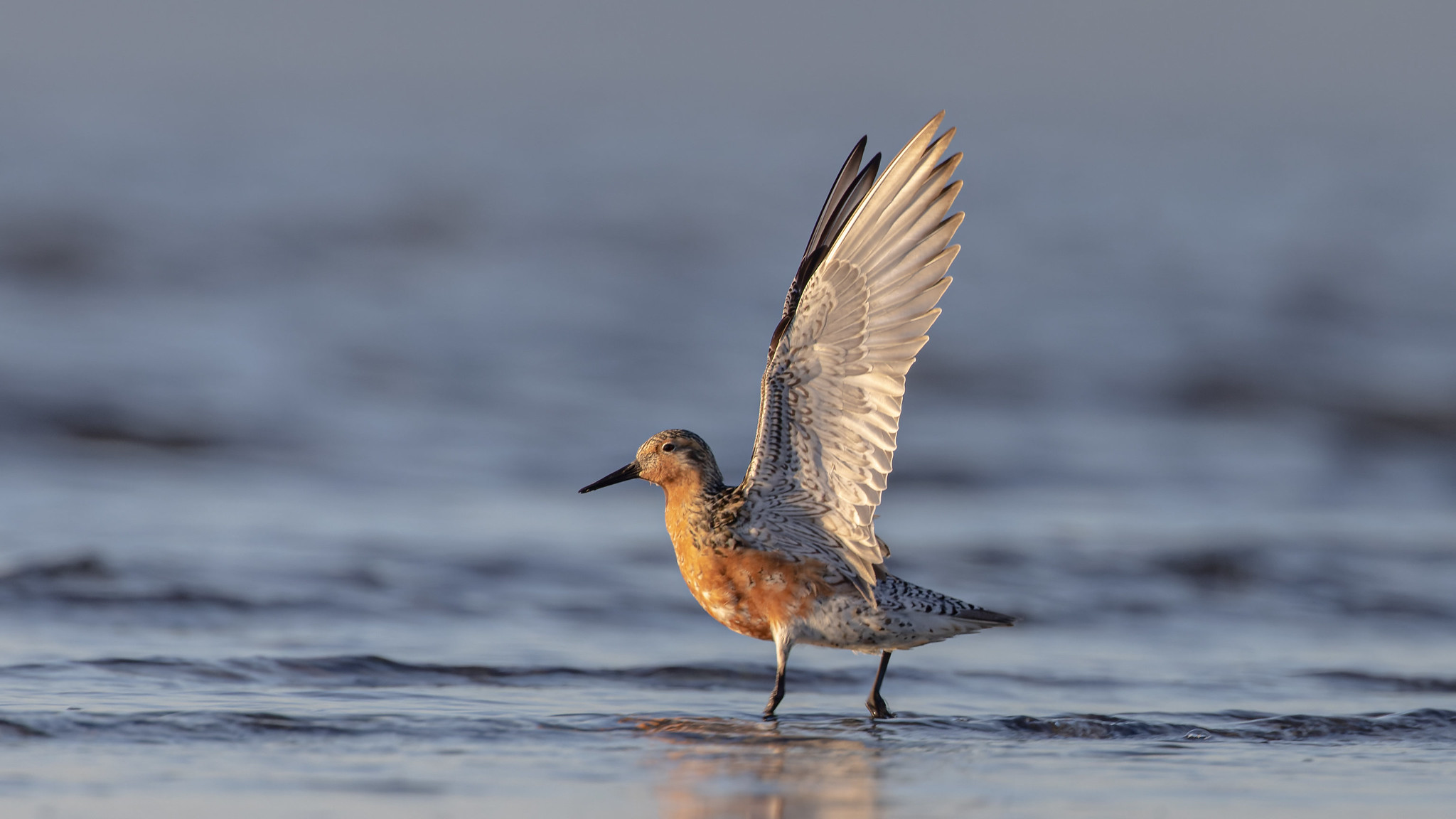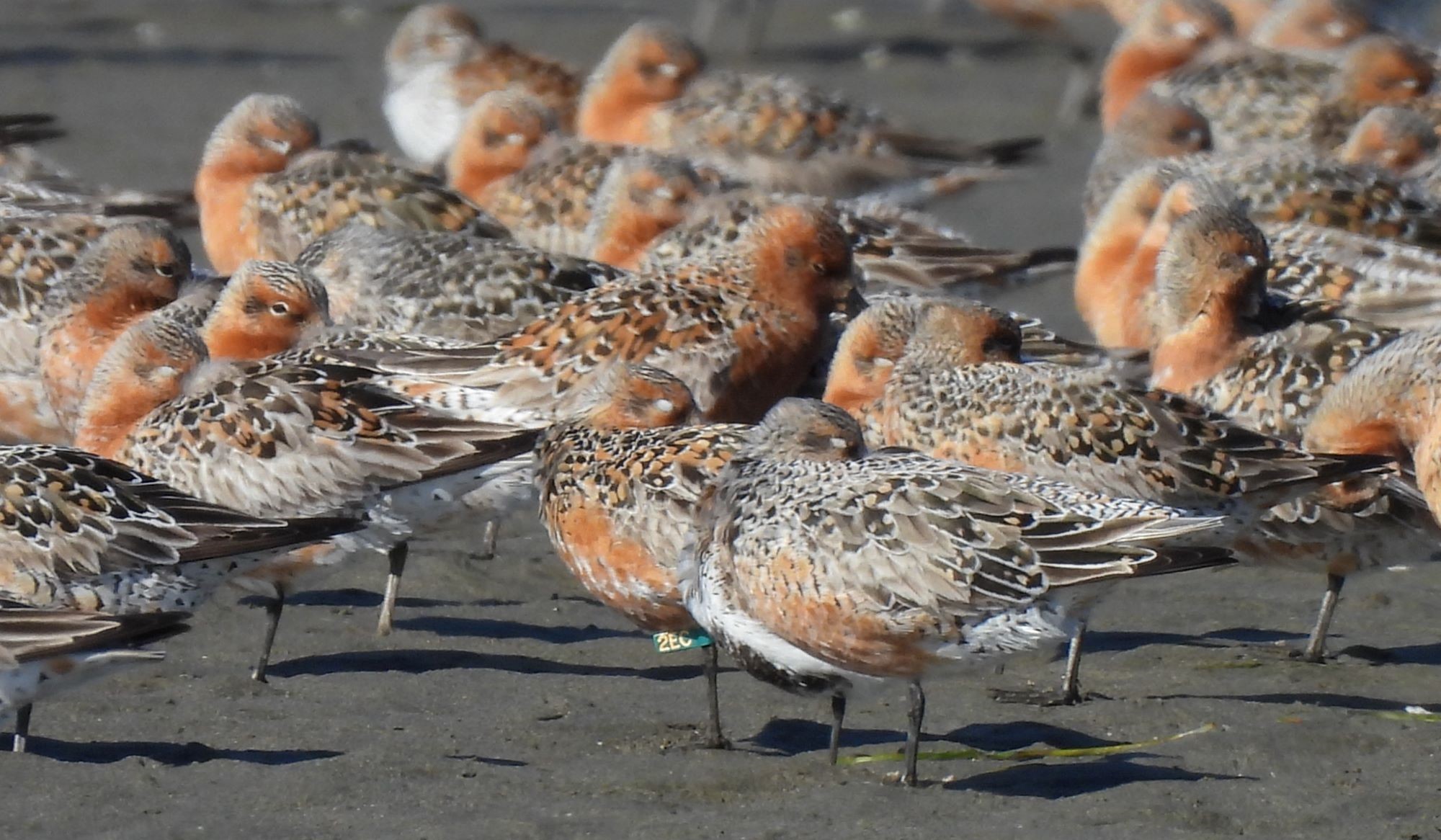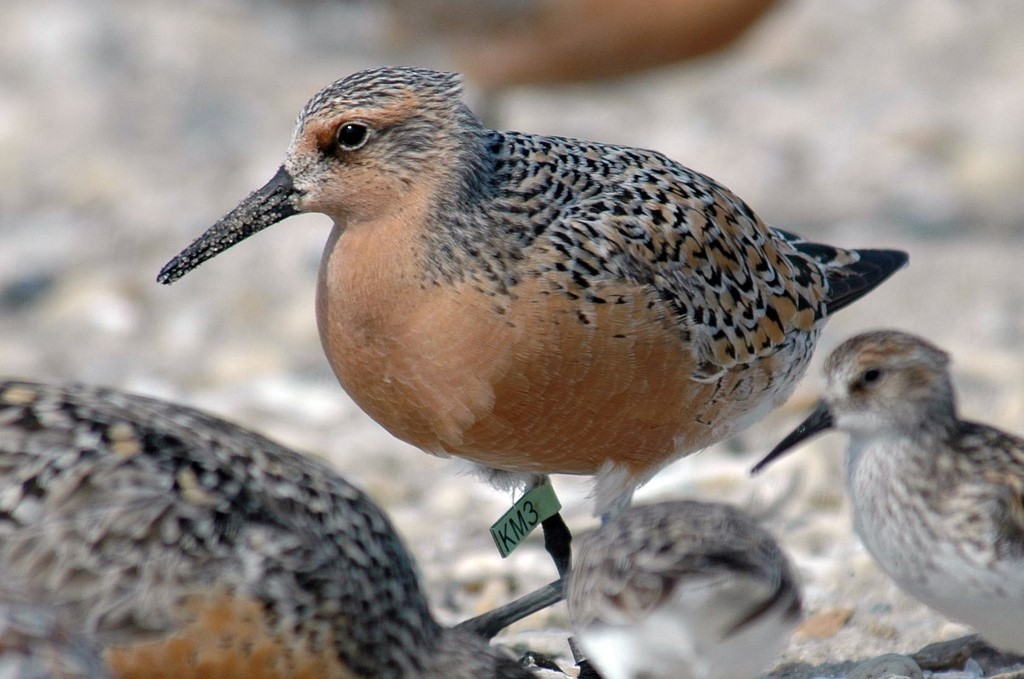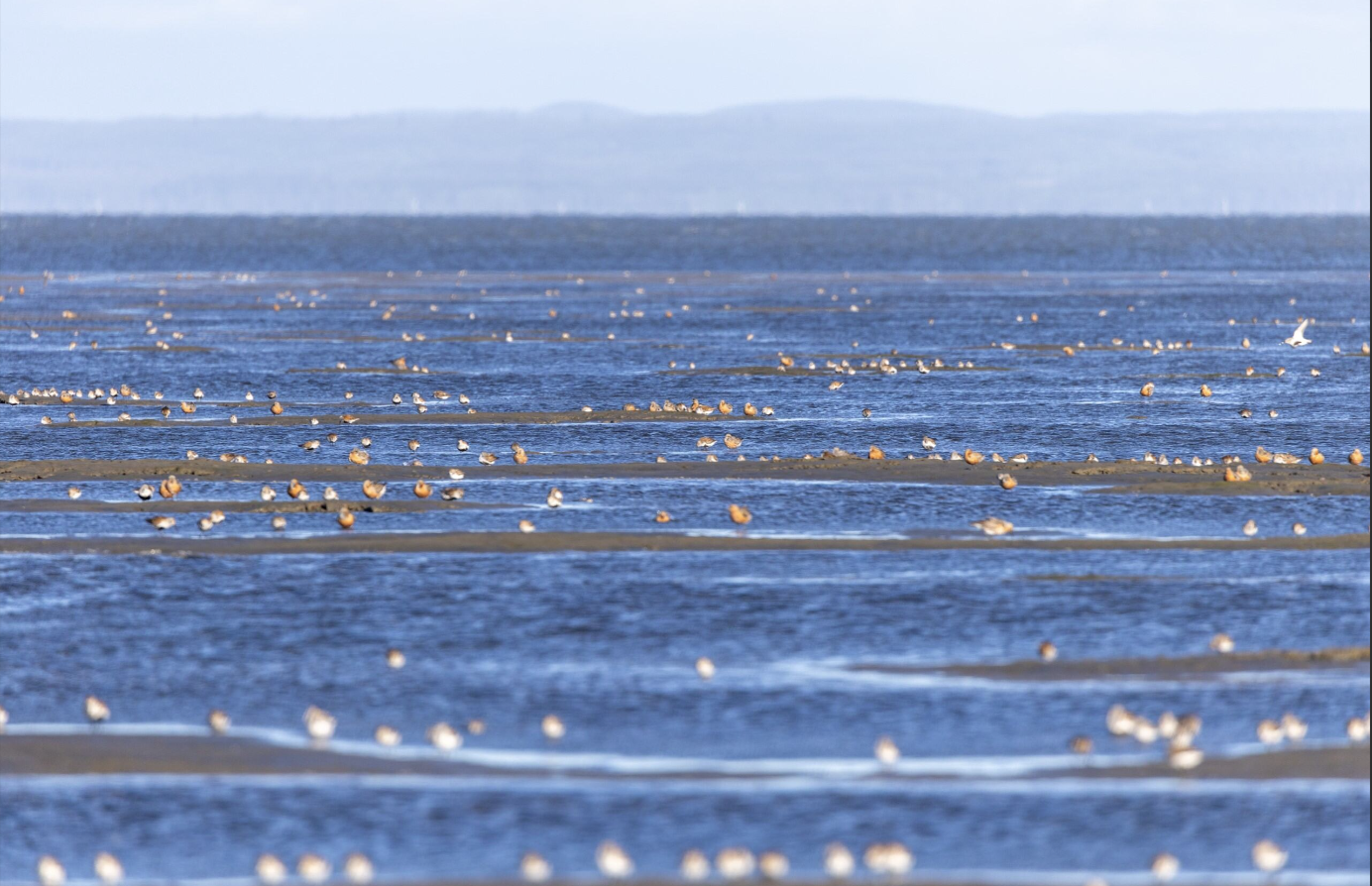
If you’ve ever taken a stroll along the muddy, sandy shorelines of Willapa Bay or boated along the foggy waters of Grays Harbor in late April or early May, chances are you’ve seen a Red Knot.
Red knots are small to medium-sized sandpipers named after the red or terracotta-colored chest plumage they sport during the breeding season.
Allison Anholt, Shorebird and Waterbird Species Lead at the Washington Department of Fish and Wildlife knows these birds well. She led this year’s Red Knot survey in Washington. As a lifelong shorebird and seabird enthusiast and professional scientist, she spends the majority of her time coordinating research projects, logistics, partners, and lab and field operations to better understand species like Red Knots.
The Project
The Red Knot project began in 2008 and is a long-term study to understand how the species uses Willapa Bay and Grays Harbor during migration and help develop population size and survival estimates for the species. It’s also a truly collaborative effort with support from the USFWS, USGS along with WDFW.
There’s no question that these coastal bays are important to the shorebirds – it’s estimated that 90% of the Red Knots that nest in Alaska and Russia will stop to rest and refuel in Washington as they make their way back from nonbreeding grounds in Mexico. And since coastal Washington is more accessible (for humans) than remote Alaska and Russia, surveying the Red Knots in the Pacific Northwest can provide researchers an opportunity to estimate the population size for this species of “Greatest Conservation Need”.

Out in the Field
A typical field day for Allison and her team includes waking up bright and early, boarding airboats, and surveying for birds along the mudflats and small islands in the bays. These areas are key foraging sites for Red Knots and many other shorebirds, where they feed on bivalves, worms, ghost shrimp, and other small invertebrates. Because the birds fly directly from coastal Washington to their breeding sites, these areas are the “most important sites for Red Knots on the entire West Coast”, shared Allison, serving as the pre-travel, pre-breeding buffet where they can rest, and build up their energy.
Once the field team locates a group of birds, they carefully scan the flock, inspecting their legs for tags – a green tag indicates the bird was banded in the U.S., and a yellow tag indicates the bird was banded in Mexico. They will also capture birds to collect blood samples for genetic analysis, and place tags on them for continued data collection if they recapture the bird in the future. Partners in Mexico will do the same during the winter, and in Alaska during breeding season, meaning scientists can follow the entire migration cycle.

The Data
From the end of April to the end of May the team conducted 39 surveys total, hosting 23 volunteers in addition to the research team. The team observed 20,258 birds during the survey period, with a daily high count of 5,190 Red Knots in Willapa Bay in early May! Only four tagged individuals were spotted more than once in this period, reflecting the truly high numbers of birds and the quick turnover of birds arriving from Mexico, resting and refueling, and departing for Alaska.
Preliminary analyses shows a higher abundance of Knots in Willapa Bay than in Grays Harbor, a reversal of previous years. This is potentially due to a combination of factors including predator presence, preferred prey availability, and survey bias. Genetic data collected from blood samples indicates the populations that breed on Wrangell Island in Russia may be unique from those that breed in Alaska. The team also identified several birds that were older than ten years old, including at least two that were older than 15!

What's Next?
The fieldwork portion of this research project is ending this year, but the work is not done. Allison and her team will analyze the data collected thus far, which will help answer questions about the ecology of the species, and their conservation needs in coastal Washington and beyond.
“These are important habitats in our backyard, and they are crucial for these species – we have learned so much, but there are still many questions left to be answered,” she said about the future of the project.
If you’d like to take action to protect Red Knots, and the many other shorebird species, Allison shares that if you are out on the mudflats, especially in late spring, give the birds plenty of space and keep your pets on a leash or off the beach.
Learn more about the work the Washington Department of Fish and Wildlife is doing to monitor and protect birds (and other fauna) on their website and blog page.
